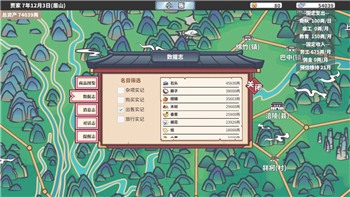太阳能可转化为化学燃料
- 24小时月刊
- 2024-11-30
- 5
Generating electricity is not the only way to turn sunlight into energy we can use
on demand(即期). The sun can also drive reactions to create chemical fuels, such as hydrogen, that can in turn power cars, trucks and trains. The trouble with solar fuel production is the cost of producing the sun-capturing
semiconductors
2 and the
catalysts
3 to generate fuel. The most efficient materials are far too expensive to produce fuel at a price that can compete with
gasoline(汽油)., ,"In order to make commercially
viable
5 devices for solar fuel production, the material and the processing costs should be reduced significantly while achieving a high solar-to-fuel
conversion
6 efficiency," says Kyoung-Shin Choi, a chemistry professor at the University of Wisconsin-Madison., ,In a study published last week in the journal Science, Choi and postdoctoral researcher Tae Woo Kim combined cheap, oxide-based materials to split water into hydrogen and oxygen gases using solar energy with a solar-to-hydrogen conversion efficiency of 1.7 percent, the highest reported for any oxide-based
photoelectrode(光电极) system., ,Choi created solar cells from bismuth vanadate using electrodeposition -- the same process employed to make gold-plated
jewelry
7 or surface-coat car bodies -- to boost the compound's surface area to a
remarkable
8 32 square meters for each gram., ,"Without fancy equipment, high temperature or high pressure, we made a nanoporous
semiconductor
1 of very tiny particles that have a high surface area," says Choi, whose work is supported by the National Science Foundation. "More surface area means more contact area with water, and, therefore, more efficient water splitting.", ,Bismuth vanadate needs a hand in speeding the reaction that produces fuel, and that's where the paired catalysts come in., ,While there are many research groups working on the development of
photoelectric
9 semiconductors, and many working on the development of water-splitting catalysts, according to Choi, the semiconductor-
catalyst
4
junction
10 gets
relatively
11 little attention., ,"The problem is, in the end you have to put them together," she says. "Even if you have the best semiconductor in the world and the best catalyst in the world, their overall efficiency can be limited by the semiconductor-catalyst
interface
12."
本文由明日于2024-11-30发表在生活百科-红苹果乐园,如有疑问,请联系我们。
文章摘自:http://hpgly.com/post/35933.html
上一篇
气体云是星体诞生的地方











![[流言板]雷尔森传中,穆科科近距离射门打飞](/zb_users/upload/2024/12/3111596453046865195.gif)